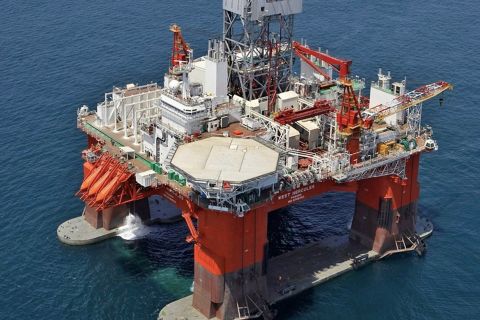
The energy transition may be more challenging than some think. (Source: Shutterstock/Hart Energy)
Moving too fast in the transition to cleaner forms of energy could backfire if attention isn’t paid to certain critical elements that seem to have gone unnoticed by some decision-makers with lofty net-zero goals.
Besides the scale and complexity involved with shifting away from fossil fuels, which dominate the energy mix, a push by some to starve oil and gas producers of capital before low-carbon and renewable resources can sufficiently meet the world’s appetite for affordable energy could destabilize the “food-water-human-well-being nexus,” delaying energy transition efforts for decades, according to a report released recently by Rice University’s Baker Institute for Public Policy. All energy sources will be needed, they say.
Underinvestment could lead to rising costs, an energy crisis and “consumer rebellions at the ballot box, in the streets, and also among large commercial parties that anchor customers in many energy grids.”
Add to this the fact that renewables, particularly wind and solar, need fossil fuels to exist: they rely, for example, on natural gas for intermittency issues on electricity grids and need petroleum-based materials for turbines and photovoltaics. So do electric vehicles (EVs), as the report points out: “A Tesla Model 3, the world’s bestselling full-size EV to date, contains approximately 200 kg of plastics, rubber and textiles—virtually all of which are petroleum-derived.”
These were just a few of the energy transition-related challenges raised in The Global Energy Transition’s Looming Valley of Death report released recently by Rice University’s Baker Institute for Public Policy.
“Our review is not a call for inaction. Far from it. Instead, the core purpose of our report is to emphasize in realistic terms the complexity of the energy challenge and the scale necessary to effect meaningful change,” report authors Gabriel Collins and Michelle Michot Foss, both fellows in energy at the Baker Institute, said in the report. “These are critical—and thus far, largely overlooked—steps on the pathway to building a sustainable and energy-abundant future that fulfills the interconnected imperatives of human well-being and biosphere health alike.”
The points were raised as world leaders roll out plans following up on pledges to cut emissions to net-zero by 2050. Energy industry leaders have been doing the same, focusing not only on renewable energy projects but also carbon management.
However, the Baker Institute researchers say “thermochemical and financial realities cannot be ignored—or we risk stranding the energy transition in the ‘valley of death,’ upon whose rocky floor it now treads.” Having just exited the so-called “energy transition valley of death—initial scale-up and fast progress downhill to the valley floor” phase, researchers said the “valley floor” phase is currently unfolding with system disruptions and a better understanding by the public of the economic costs of the energy transition. The third phase, they explain, begins after 2025—“ascending the valley’s far wall”—with new technologies such as small modular nuclear reactors reaching commerciality and continued economic and supply chain burdens.
“Accordingly, what happens between now and the late 2020s, in all likelihood, will fundamentally determine the failure or success of an accelerated energy transition,” the report said. Looking at past energy transitions—such as moves from wood to coal and from coal to oil—the new source took decades to meaningfully move into place. The road for renewables, like its predecessors, is likely to be a similarly slow journey.
The report stated that wind and solar supplied only 4% of global primary energy in 2020, its “banner year to date.”
Cost Concerns
As the world moves deeper into the energy transition journey, researchers pointed out that most think low-emissions energy technologies such as wind, solar, grid-scale batteries for energy storage and small modular nuclear reactors are commercialized or have a clear path for commercial deployment. However, “These views ignore the full and largely opaque costs of using wind, solar, and battery storage and the regulatory expense of licensing nuclear energy, biased by large-scale designs,” the report said. “Uncertainty about the energy transition valley of death curve means that underinvestment in incumbent energy sources can create—and prolong—an energy crisis.”
The time it takes to scale up a new energy system could put it at a disadvantage when competing against massive, lower-cost fossil fuels systems. Limiting access to fossil fuels could send costs skyrocketing for consumers, who in turn could demand lower-cost fuels—a move that could slow the energy transition. Consumers may also be reluctant to trade their gasoline-powered, less expensive vehicles for pricier, electric ones.
Energy demand continues to rise.
“Keeping up with rising energy needs, while also trying to reduce carbon intensity with sources that have low energy density, will pose unprecedented challenges,” the report said. “Consider the United States, which itself accounts for about 16% of global primary energy use. Based on current operating experience and technology, upwards of about 460,000 onshore wind turbines, seven times the current installed base, could be required to produce 50% of the American electricity supply. Assuming so large an expansion could even gain public acceptance, it would require massively augmenting transmission capacity and storage and/or backup generation.”
Developing nations will also need affordable energy sources and likely will use resources most available to them. High CO2 emitters China and India are among the countries that will likely turn to domestic coal, according to the report.
Another factor to consider, they say, is energy density.
“Materials intensity associated with energy transition technologies like wind, solar, battery storage for grids, and battery EVs exceeds that of conventional technologies because of lower energy density,” the researchers said. “In fact, the pronounced trade-off between energy density and materials intensity represents an enormous gap in energy transition thinking, analysis and policymaking.”
In addition, there are costs to consider for raw materials and integration of renewables into power grids. And the public’s coffers?
“Accelerated energy transition’s public finance component—the subsidies and other support deemed vital to ensuring the scale-up of alternative energy technologies, not least by ensuring attractive returns to investors—is bundled into taxpayer obligations, further exacerbating cost opacity,” researchers said in the report.
Then, there’s the carrot dangling in front of investors trying to make money while demanding environmental stewardship: $90/bbl oil.
Fossil fuels, as well as renewables, have a place in the energy transition.
“Ample energy supplies are the bedrock of modern civilization. As such, climate progress will require simultaneously seeking to maximize energy abundance, affordability, efficiency and reliability,” the report said. “Successful approaches will emphasize ‘all sources on deck’—with a prominent role for wind, solar and better grid batteries, but also major roles for vital but less popular characters: nuclear energy and carbon taxation.”
Recommended Reading
US Drillers Add Oil, Gas Rigs for Second Week in a Row
2024-01-26 - The oil and gas rig count, an early indicator of future output, rose by one to 621 in the week to Jan. 26.
Second Light Oil Discovery in Mopane-1X Well
2024-01-26 - Galp Energia's Avo-2 target in the Mopane-1X well offshore Namibia delivers second significant column of light oil.
E&P Highlights: Jan. 29, 2024
2024-01-29 - Here’s a roundup of the latest E&P headlines, including activity at the Ichthys Field offshore Australia and new contract awards.
Seadrill Awarded $97.5 Million in Drillship Contracts
2024-01-30 - Seadrill will also resume management services for its West Auriga drillship earlier than anticipated.
Oceaneering Won $200MM in Manufactured Products Contracts in Q4 2023
2024-02-05 - The revenues from Oceaneering International’s manufactured products contracts range in value from less than $10 million to greater than $100 million.





